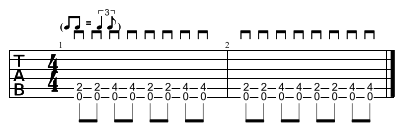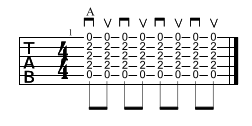This lesson is all about classic blues turnaround in the key of E. A turnaround is usually played on the last two measures of a Blues form. It is called the turnaround, because it brings you back to the beginning of the song. Turnarounds can also be used to start a song, which is what the first exercises focuses on.
Blues Form Turnaround
This turnaround #1 shows one of the most classic turnarounds.
Turnaround #1
Turnaround #2 shows a classic variation of a blues turnaround.
Turnaround #2
Turnaround #3 is another variation of the classics.
Turnaround #3
The next two examples are full blues form starting with a turnaround and finishing with a turnaround.
This first example uses the turnaround #1 that we worked on above in a blues form.
This second example uses the turnaround #2 that we used above in a blues form.
If you have any questions, please contact us at patrice@paliatsky.com






























